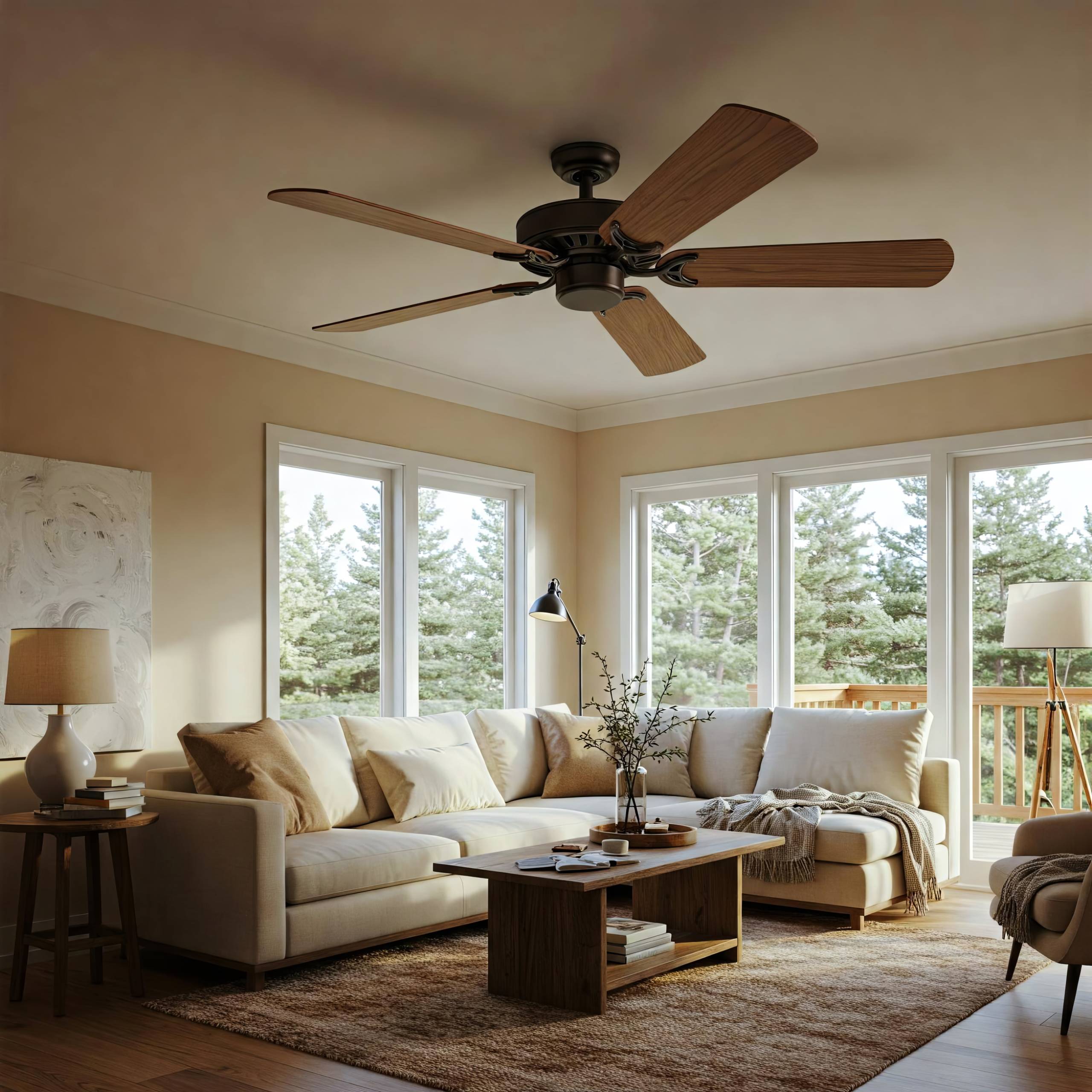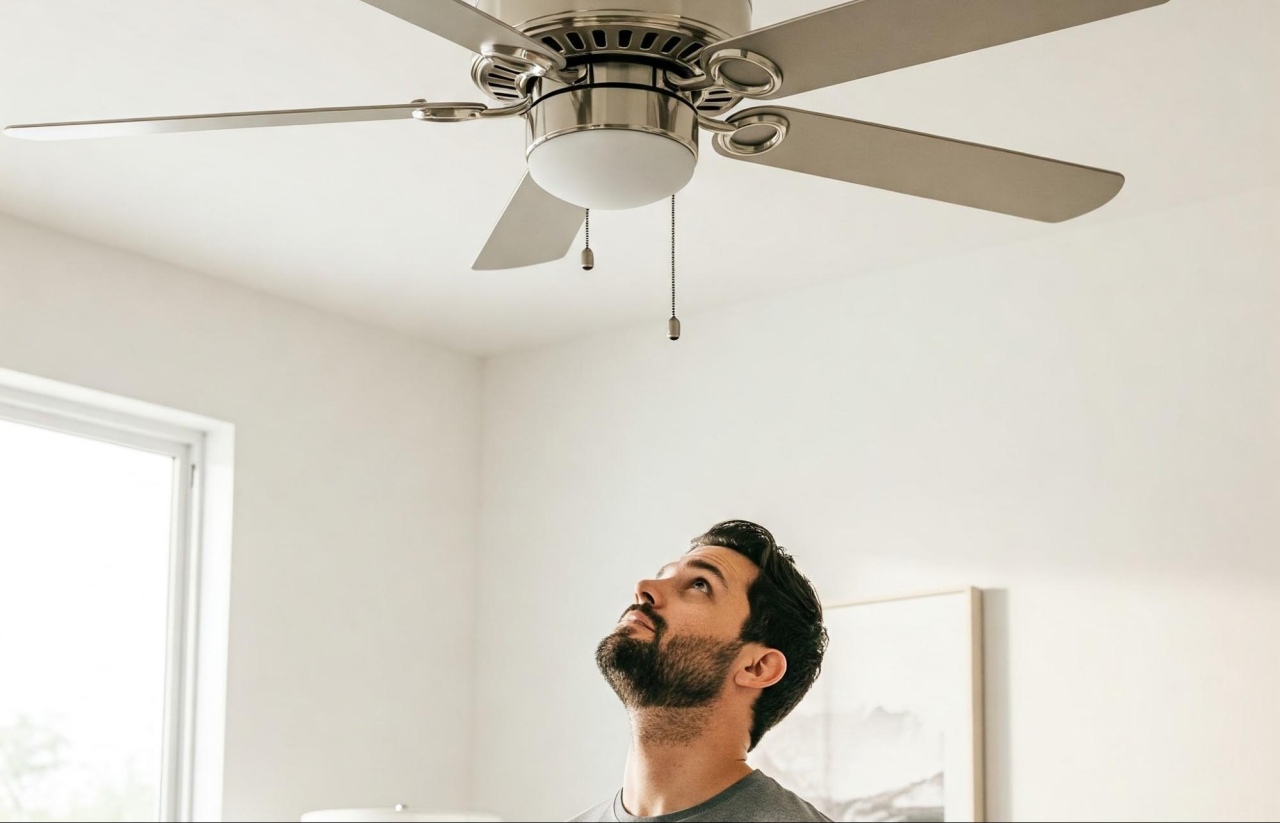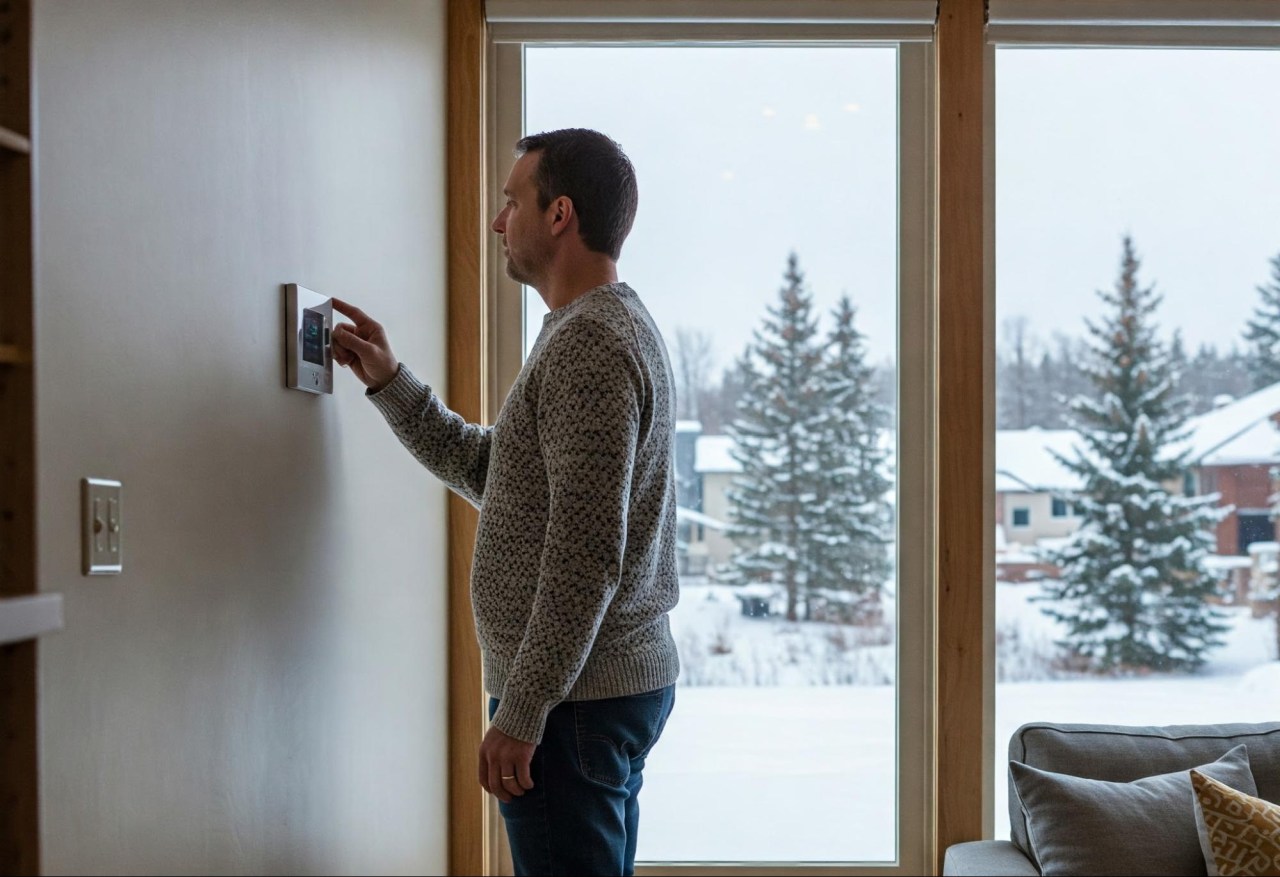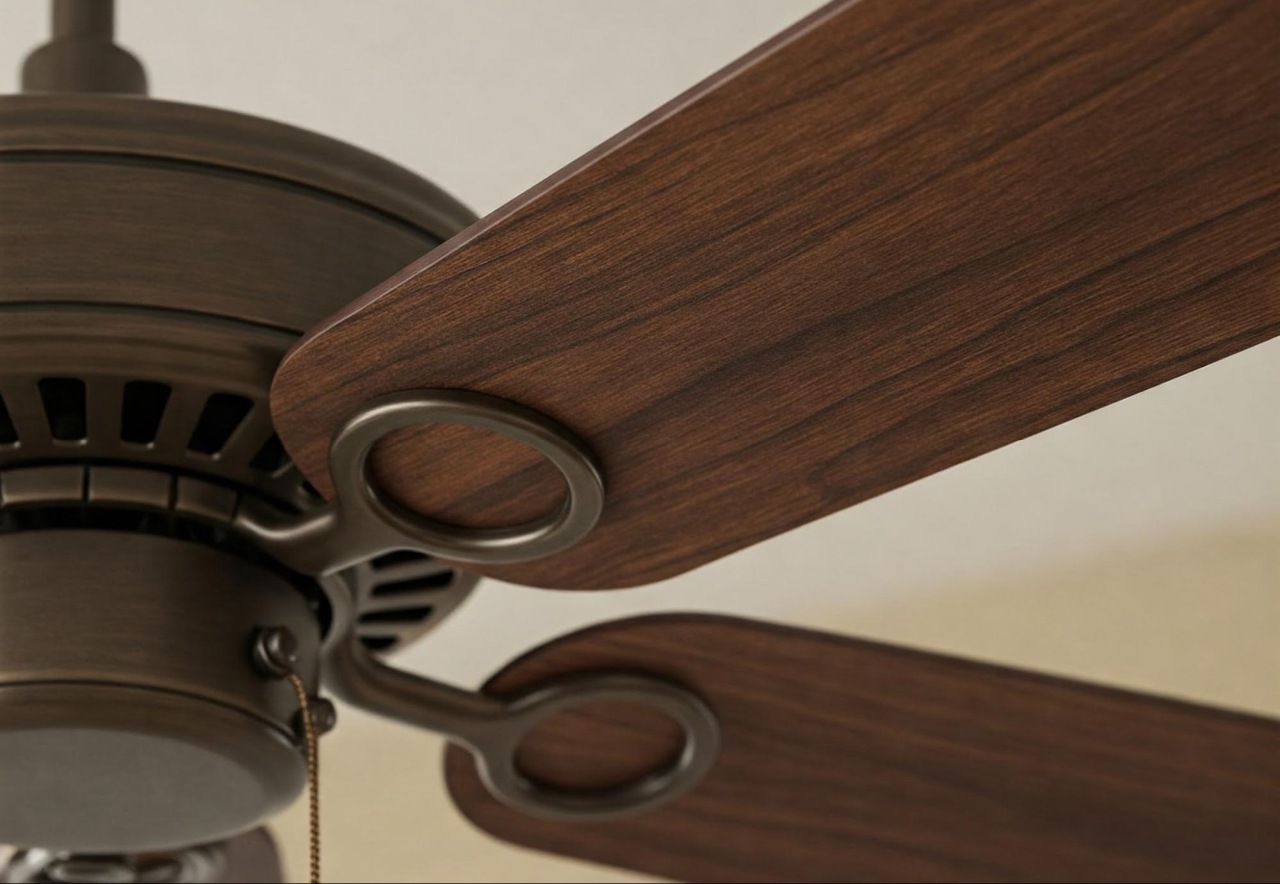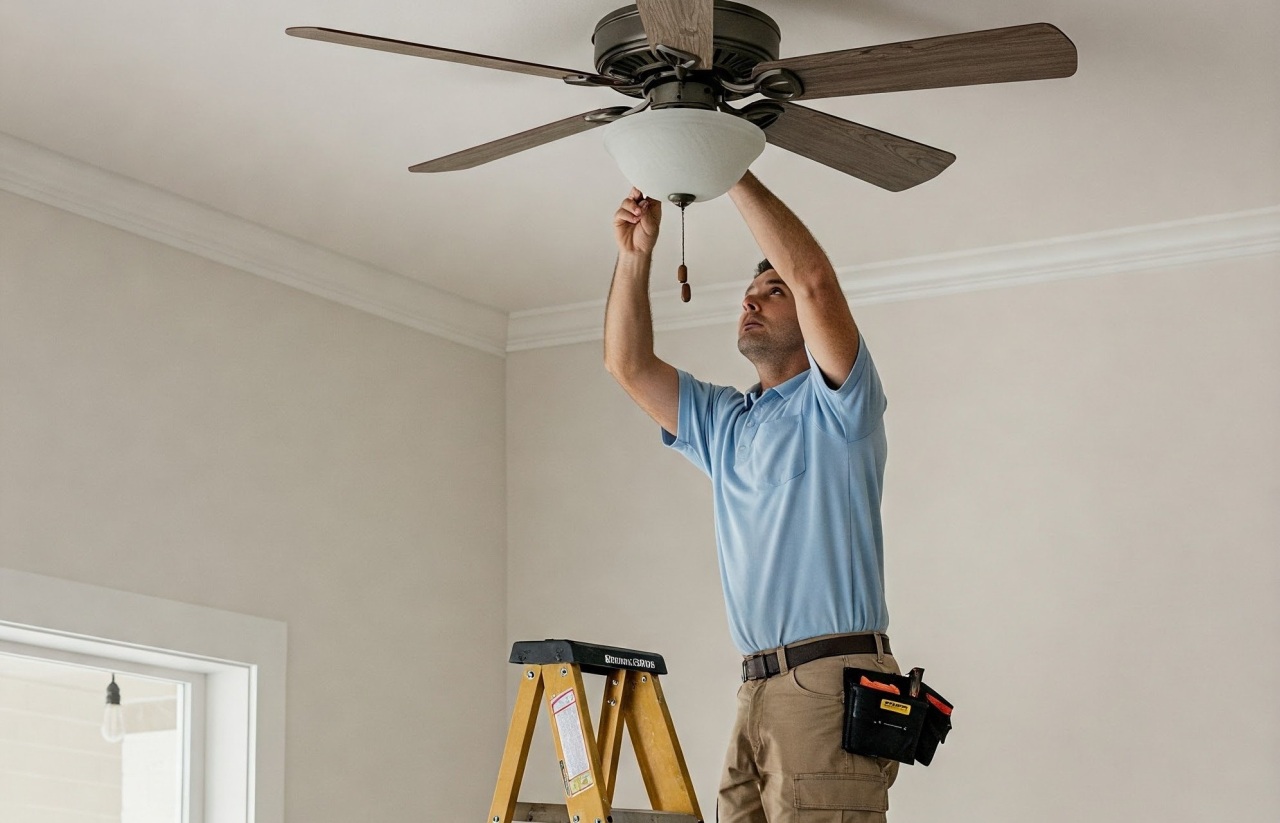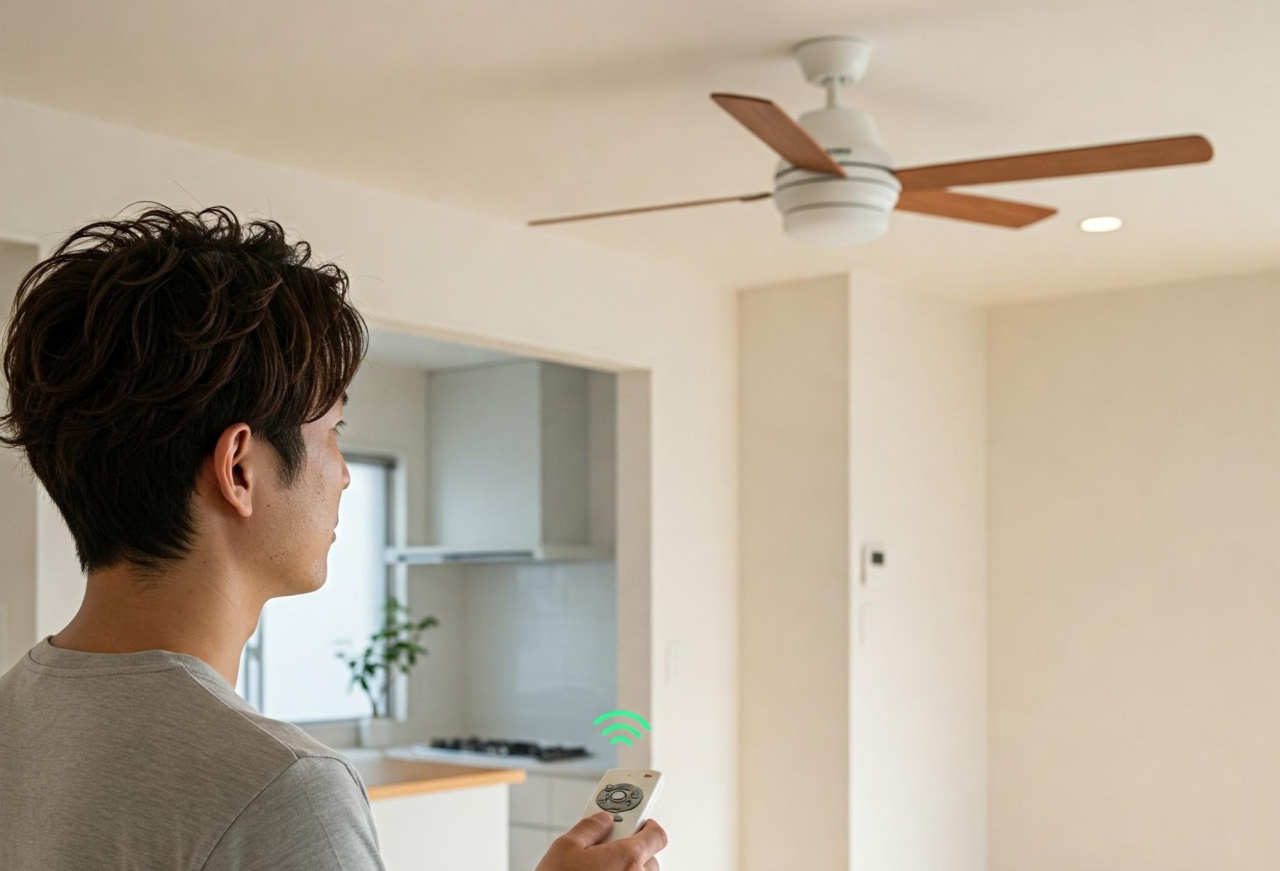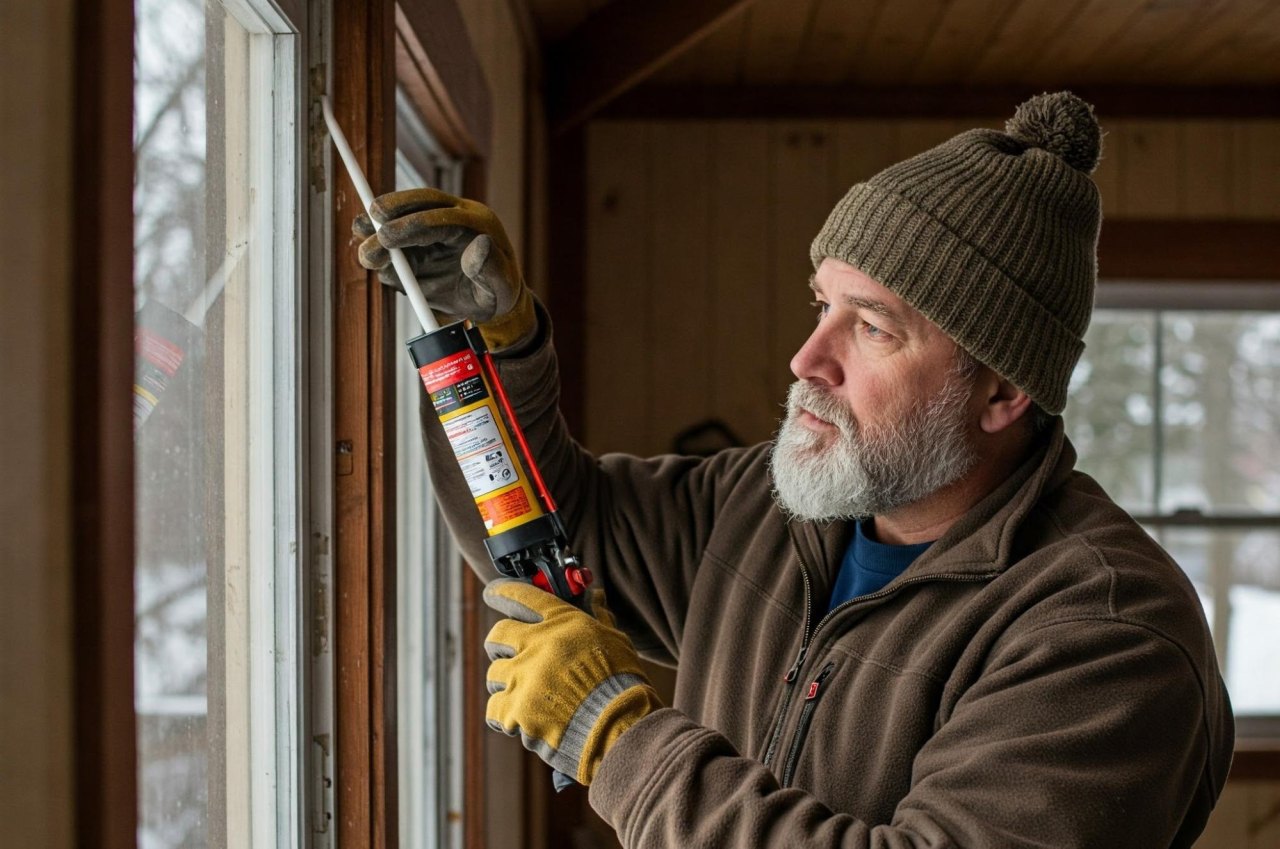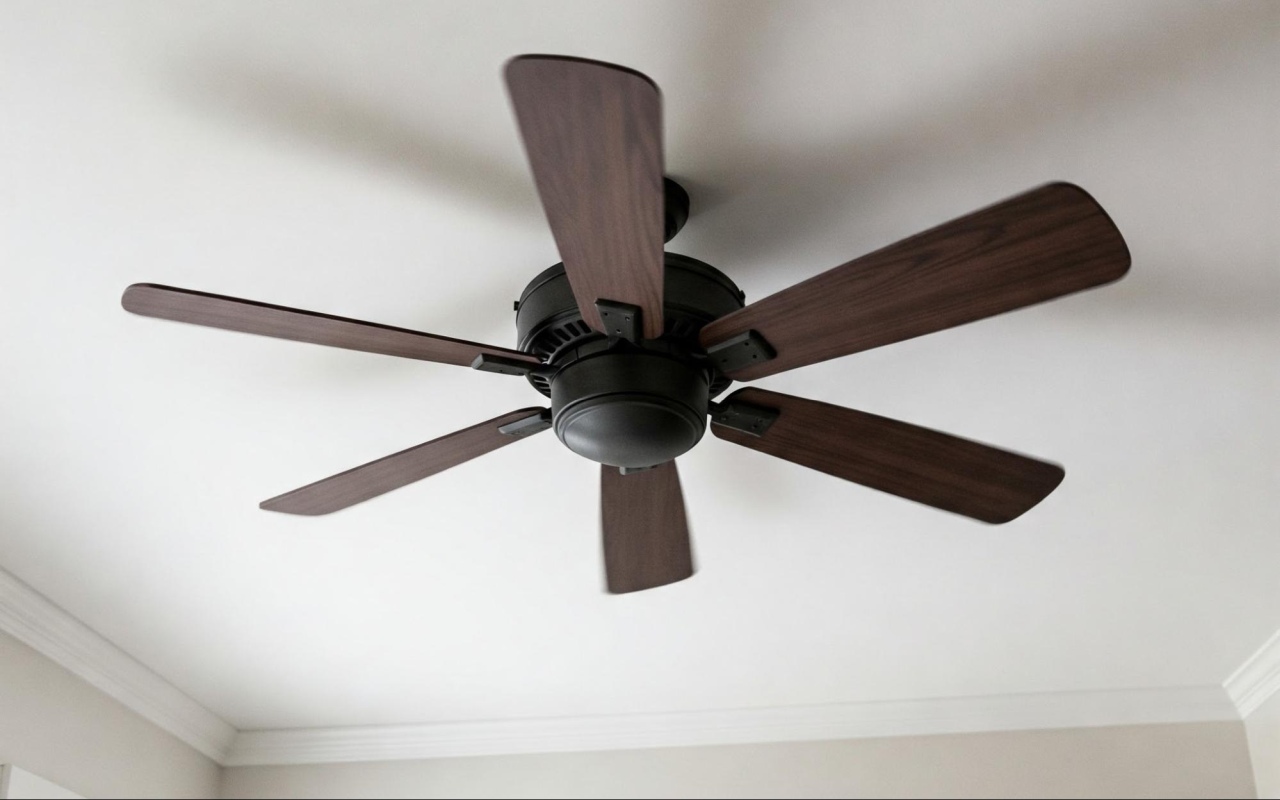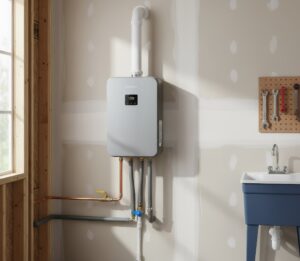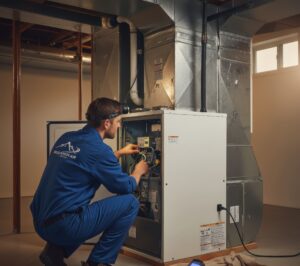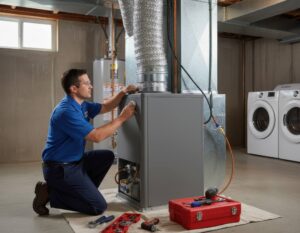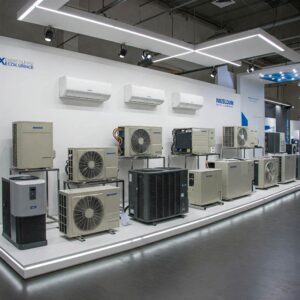More Canadian homeowners are installing ceiling fans as a cost-efficient way to cool the home in the summer months—but did you know that ceiling fans can also help with home comfort during the winter?
Proper fan usage can increase energy efficiency and lower monthly bills, too. So, getting the blade direction right is one of the first things to understand with your ceiling fan. A small switch can make a big difference.
Let’s consider the ceiling fan direction in winter for optimal comfort and energy savings…
What’s the Correct Ceiling Fan Direction in Winter?
In winter, the ceiling fan should turn clockwise so that warm air that rises and collects near the ceiling is redistributed to the lower parts of the room. In addition to rotating clockwise, the fan should be set at low speed for gentle air movement (and no wind chill).
Let’s look more closely at what a clockwise fan direction means in winter and how to change the settings if the fan turns in the wrong direction.
MAKE THE RIGHT HEATING & COOLING DECISIONS…
For over two decades, Alberta Mountain Air has helped Calgarians solve heating and cooling problems and maintain ideal comfort levels. Get in touch online for a quote.
What Does a Clockwise Ceiling Fan Direction Mean?
A clockwise ceiling fan direction refers to the direction of the blades when standing directly beneath the fan and looking upwards at it. The fan blades turn from right to left like the hands of a clock.
Benefits of Using the Correct Fan Direction in Winter
Setting the ceiling fan to clockwise in winter improves comfort levels because warm air is redistributed.
Hot air rises, leading to warm air getting trapped near the ceiling in winter. If this air can be transferred downward to lower levels in the room, it helps to raise the room temperature.
The blade motion of a ceiling fan set to turn clockwise at low speed creates an updraft that pulls cool air up. This effectively displaces the warmer air near the ceiling, mixing with the colder air and dispersing it throughout the room, making it feel warmer.
The room can then reach the temperature set on the thermostat in winter quicker, using less energy—and homeowners may be able to lower their thermostat by 1–2°F while maintaining the same comfort levels.
This heat redistribution process potentially reduces the reliance on the furnace or other home heating systems and extends the life of expensive HVAC equipment.
Less reliance on the HVAC system for heating (or cooling) a home generally means lower energy usage and lower monthly utility bills. There may also be environmental benefits because lower energy usage means a lower carbon footprint.
Benefits of a Low-Speed Setting
In winter, the fan should be set to low speed for gentle air movement. Otherwise, it may create an unwanted “wind-chill” effect that makes the room’s occupants feel cooler rather than warmer.
A higher speed, anticlockwise ceiling fan direction in summer produces a desirable cooling effect that can reduce the reliance on air conditioning for Calgary homeowners.
Blade Angle
The angles of the ceiling fan blades should be set to a minimum of 12 degrees. However, keep the angle below 16 degrees or it may create the annoyance of blowing around loose objects.
How to Change the Ceiling Fan Direction
Ceiling fans used in Calgary will either have a toggle switch for ceiling fan direction on the main fan base itself or come with a remote control to change the ceiling fan settings.
With traditional ceiling fans, here’s how to change the direction of the blades:
- Turn off the fan and wait for the blades to stop moving (clean the blades if necessary)
- Find the switch that controls the blade direction (usually on the fan body or light fixture)
- Toggle the switch to change the direction
- If necessary, replace the light glass
- Turn the fan back on
Remember, safety comes first. If you’re using a ladder, ensure it’s on a stable footing, and always wait for the blades to come to a complete stop before tampering with the fan.
To change the blade direction on smart fans with remote controls, do this:
- Turn off the fan and let it come to a complete stop (clean the blades if necessary)
- Press and hold the fan button on the remote control, which usually reverses the direction of the fan (if not, check the user manual for instructions)
- Turn the fan back on
Why Use Ceiling Fans with a Central Heating and Cooling System?
Ceiling fans are outdated, aren’t they?
Well, no. Even with the latest HVAC system installed to keep you toasty warm in winter and cool in summer, ceiling fans still benefit homes.
With the cost of a furnace in Calgary so high—not to mention the costs of air conditioning in the summer—home utility bills can be significant. Ceiling fans can shave quite a few dollars off these bills over a year.
HVAC equipment is highly powered. A standard high-efficiency central air conditioning unit uses 3,500 watts of power when in use, while a ceiling fan uses around 50 watts on high speed and 10-30 watts on low speed.
A ceiling fan on low speed costs less than $1/month if you run it for eight hours a day. This is nothing compared to the costs of running a furnace or air conditioner.
Even if you run an energy-efficient heat pump most of the year, ceiling fans in frequently used rooms can help control electricity bills when working in tandem with the main heating/cooling equipment.
Additional Winter Energy Efficiency Tips
In addition to running the ceiling fan clockwise at low speed, the following quick tips should help you maintain an energy-efficient Calgary home not only in winter but all year round:
- Use programmable thermostats to maintain better control over the home’s temperature settings when you’re away or asleep.
- Seal drafts by weatherproofing and caulking around windows, doors, and baseboards, and improve insulation in the attic and other rooms.
- Use thick curtains to keep warmth in and open them in the day to let the sunshine in.
- Book annual furnace maintenance and a heat pump tune-up before the “high-use” season.
- Monitor your heating and cooling equipment periodically and ensure you book a prompt inspection and HVAC repairs if something doesn’t seem right.
- Consider an energy audit to identify where other improvements and cost savings can be made.
FAQs
Ceiling fans generally last for 10 years or more if well-maintained. You may want to upgrade to a model with a remote control or a more energy-efficient ceiling fan (ENERGY STAR®). If you need to move a ceiling fan from one place to another, this might be a good time to upgrade.
A small ceiling fan will cool a room up to around 100 square feet. A large ceiling fan will cool spaces up to 400 square feet.
Even with central air conditioning installed, there are benefits to installing a ceiling fan in every room. Ceiling fans turning in the right direction in summer and winter can increase comfort in almost any room. Also, consider using more than one ceiling fan in rooms larger than 500 square feet.
In the summer, the ceiling fan should be set to spin counter-clockwise to draw warm air up and send cool air down into the room—the reverse of winter, when you want cool air to be drawn up and warm air down. In the summer months, a quicker fan speed can also add a wind-chill factor that helps room occupants feel cooler.
Using a ceiling fan in winter can help reduce heating costs by up to 10 to 15 percent because it helps to circulate warm air more evenly throughout the room and means the furnace does not need to kick on so frequently.
The precise savings will depend on your home’s layout, insulation, and how you use your thermostat. Most estimates suggest that for every degree the thermostat is lowered, you save about three percent on heating costs. The DOE in the U.S. states the following: “You can save as much as 10% a year on heating and cooling by simply turning your thermostat back 7°–10°F for 8 hours a day from its normal setting.”
Energy-Efficient Heating & Cooling Tips from the Pros in Calgary…
Setting the ceiling fans correctly is just one small aspect of getting your home’s heating and cooling right.
The HVAC professionals at Alberta Mountain Air are SAIT-certified and can help you make informed heating and cooling decisions. So, if you’re in Calgary and considering your options, contact us online.
